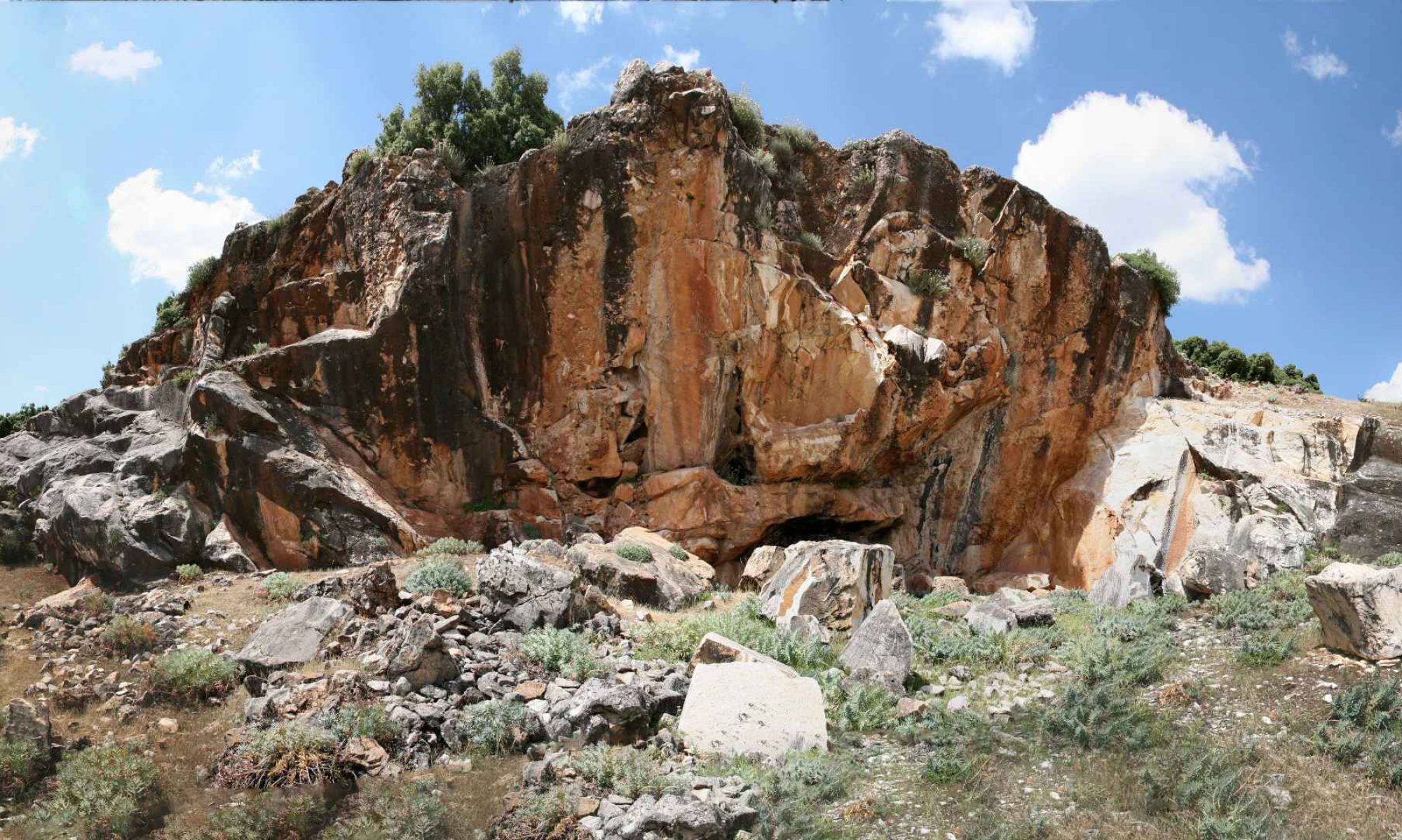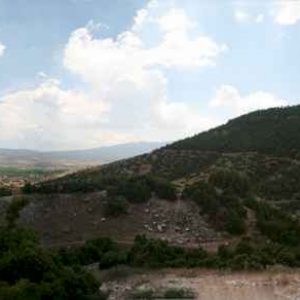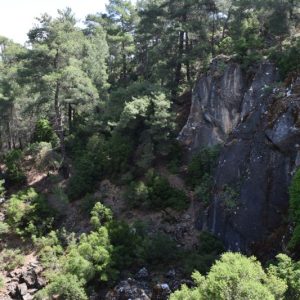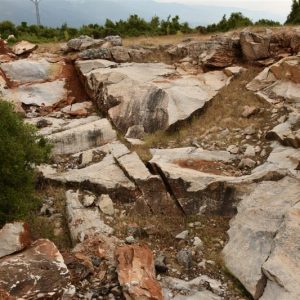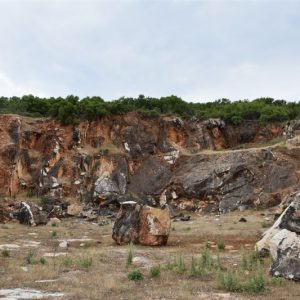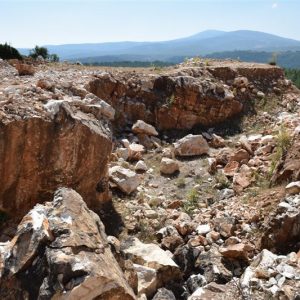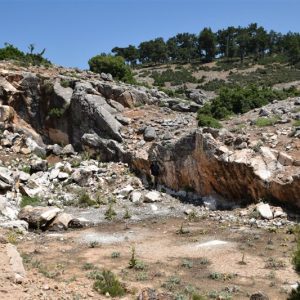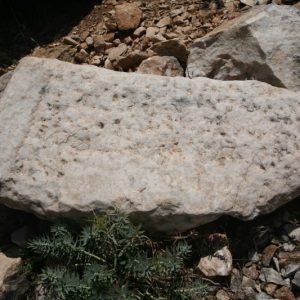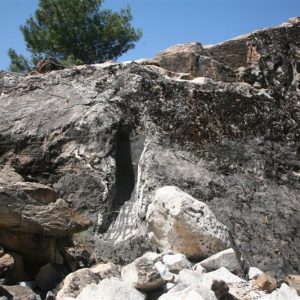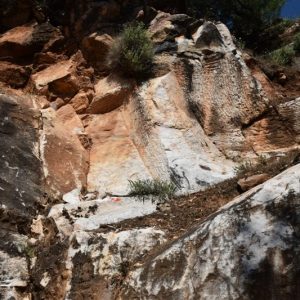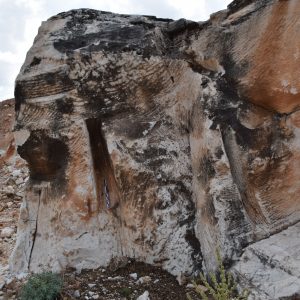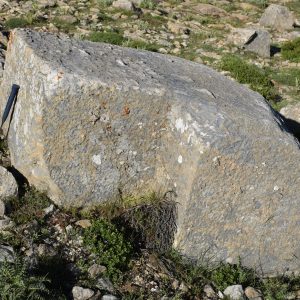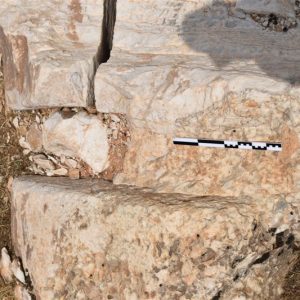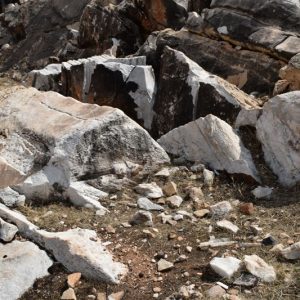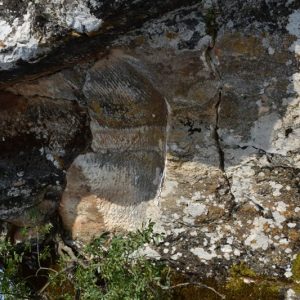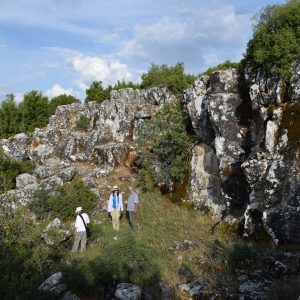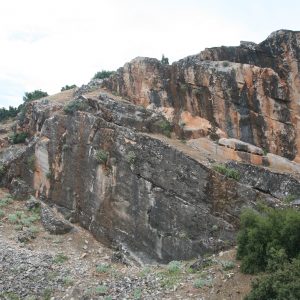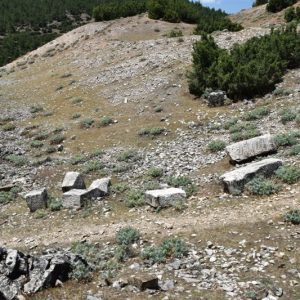
Aphrodisias, located in south-western Turkey, in Caria, is one of the best-preserved Greco-Roman cities in Turkey and the Roman Empire. It was famous in antiquity for its cult sanctuary dedicated to the goddess Aphrodite. The city was founded in the early second century BC and flourished from the period of Augustus until Late Antiquity, eventually becoming a capital of the province of Caria and a seat of a bishop in AD 300. Marble quarrying was an important industry to Aphrodisias, resulting in the spectacular programme of urban development in the first and second centuries AD (Ratté 2002). Since 1961, archaeological works in Aphrodisias have been conducted by the New York University, and later in conjunction with Oxford University.
From the first half of the 20th century, the city was considered an important centre for sculptural production and the locus of a so-called ‘school of sculpture’ (e.g. Floriani Squarciapino 1943; 1991; Bergmann 1999), with itinerant masters active both at home and across the Roman world; several signatures of Aphrodisian craftsmen have been discovered abroad, including Rome, and other cities of Italy, as well as Greece, and North Africa. Therefore, one of the broader research questions of our project concerns whether or not marble from Aphrodisias was exported beyond its local origins. Some scholars suppose Aphrodisian marble was traded outside Asia Minor as a raw material (Monna and Pensabene 1977), to be used specifically by the Aphrodisian sculptors working outside their homeland (e.g. Attanasio et al. 2012a). On the other hand, other scholars believe it was used primarily locally, allowing for the possibility that it was exported from Aphrodisias to the wider Roman market as fully carved sculptures (Russell 2013; Long 2012).
The well-known marble quarries of Aphrodisias, located two km north of the city (the so called City Quarries), were already investigated by Nuşin Asgari in 1992 (unpublished report), and later by Gianni Ponti and Peter Rockwell (Ponti 1996; Rockwell 1996). Archaeometric studies were also conducted by other scholars who investigated marbles used in antiquity (e.g. Lazzarini et al. 2002, 163–168; Attanasio 2003; Attanasio et al. 2006; Brilli et al. 2005; Brilli et al. 2015).
In addition to the City Quarries, new marble sources were discovered by Leah Long during a survey of marble quarries as part of the Aphrodisias Regional Survey from 2005–2009 (Long 2012). These quarries are located at a distance ranging from 5 km to as far away as 17 km (Babadağ quarries) from the ancient city as the crow flies. Moreover, Ben Russell has conducted the most recent topographic and historical studies (Russell 2016, 251–262).
In 2015, the Marmora Asiatica’s survey focused on both the so-called City Quarries, as well as the Regional Quarries, all in the Karacasu Administrative District. The area covered approximately 500 km2 and was divided into twelve clusters labelled as AF1 to AF12, with the City Quarries (clusters AF9 and AF12) located in an area of approximately 1.5 km2. Our team surveyed a total of ninety-six quarries and scanned six of them.
References
- Attanasio D., 2003: Ancient White Marbles. Analysis and Identification by Paramagnetic Resonance Spectroscopy. Rome: L’Erma di Bretschneider.
- Attanasio, D., Brilli, M., Ogle N., 2006: The Isotopic Signatures of Classical Marbles. Rome: L’Erma di Bretschneider.
- Attanasio, D., Bruno, M., Landwehr, C., 2012a: ‘I marmi scultorei di Caesarea Mauretaniae (Cherchel, Algeria)’, in M.B. Cocco, A. Gavini, A. Ibba (eds.), L’Africa romana. Trasformazione dei paesaggi del potere nell’Africa settentrionale fino alla fine del mondo antico. Atti del XIX convegno di studio. Sassari 16–19 dicembre 2010. Rome: Carocci, 527–540.
- Bergmann, B., 1999: Chiragan, Aphrodisias, Konstantinopel: Zur mythologischen Skulptur der Spätantike. Wiesbaden: Reichter.
- Brilli, M., Cavazzini, G., Turi, B., 2005: ‘New data of 87Sr/86Sr ratio in classical marble: an initial database for marble provenance determination’. Journal of Archaeological Science 32, 1543–1551.
- Brilli, M., Giustini, F., Conte, A.M., Lapuente Mercadal, P., Quarta, G., Royo Plumed, H., Scardozzi, G., Belardi, G., 2015: ‘Petrogrpahy, geochemistry, and cathodoluminescence of ancient white marble from quarries in the southern Phrygia and northern Caria regions of Turkey: Consideration on provenance discrimination’. Journal of Arcaheological Science: Reports 4, 124–142.
- Floriani Squarciapino, M., 1943: La Scuola di Afrodisia. Rome: Governatorato di Roma.
- Floriani Squarciapino, M., 1991: ‘La scuola di Aphrodisias, dopo 40 anni’, in R. R. R. Smith (ed.), Aphrodisias papers 2. The theatre, a sculptor’s workshop, philosophers, and coin types. Inculding the papers given at the Third International Aphrodisias Colloquium held at New York University on 7 and 8 April, 1989. JRA Suppl. 2. Ann Arbor, 123–126.
- Lazzarini, L., Ponti, G., Martinez, M., Rockwell, P., and Turi, B., 2002: ‘Historical, Technical, Petrographic, and Isotopic Features of Aphrodisian Marble’, in L. Lazzarini (ed.), ASMOSIA VI. Proceedings of the Sixth International Conference, Venice, June 15–18 2000. Interdisciplinary Studies on Ancient Stone. Padua: Bottega d’Erasmo Aldo Ausilio, 163–68.
- Long, L., 2012: ‘Regional marble quarries’ in C. Ratté, P. De Staebler (eds.), The Aphrodisias Regional Survey. Mainz: Philipp von Zabern, 165–201.
- Monna, D., Pensabene, P. 1977: Marmi dell’Asia Minore. Rome: Consiglio Nazionale delle Ricerche.
- Ponti, G., 1996: ‘Ancient quarrying at Aphrodisias in the light of geological configuration’, in C. Roueché, R.R.R. Smith (eds.), Aphrodisias Paper 3. The Setting and Quarries, Mythological and other Sculptural Decoration, Architectural Development, Portico of Tiberius, and Tetrapylon. JRA Suppl. 20. Ann Arbor, 105–110.
- Ratté, C., 2002: ‘The urban development of Aphrodisias in the late hellenistic and early imperial periods’, in C. Berns, H. von Hesberg, L. Vandeput, M. Waelkens (eds.), Patris und Imperium. Kulturelle und politische Identität in den Städten der römischen Provinzen Kleinasiens in der frühen Kaiserzeit. Kolloquium Köln, November 1998. Leuven: Peeters, 5–32.
- Rockwell, P., 1996: ‘The marble quarries: a preliminary study’, in C. Roueché, R.R.R. Smith (eds.), Aphrodisias Paper 3. The Setting and Quarries, Mythological and other Sculptural Decoration, Architectural Development, Portico of Tiberius, and Tetrapylon. JRA Suppl. 20. Ann Arbor, 81–104.
- Russell, B., 2013: The Economics of the Roman Stone Trade. Oxford: OUP.
- Russell, B., 2016, ‘Mapping the marble quarries’, in R. R. R. Smith, J. Lenaghan, A. Sokolicek, K. Welch (eds.), Aphrodisias Paper 5. Excavation and Research at Aphrodisias, 2006–2012, JRA, Supp. 103. Portsmouth, 251–262.
